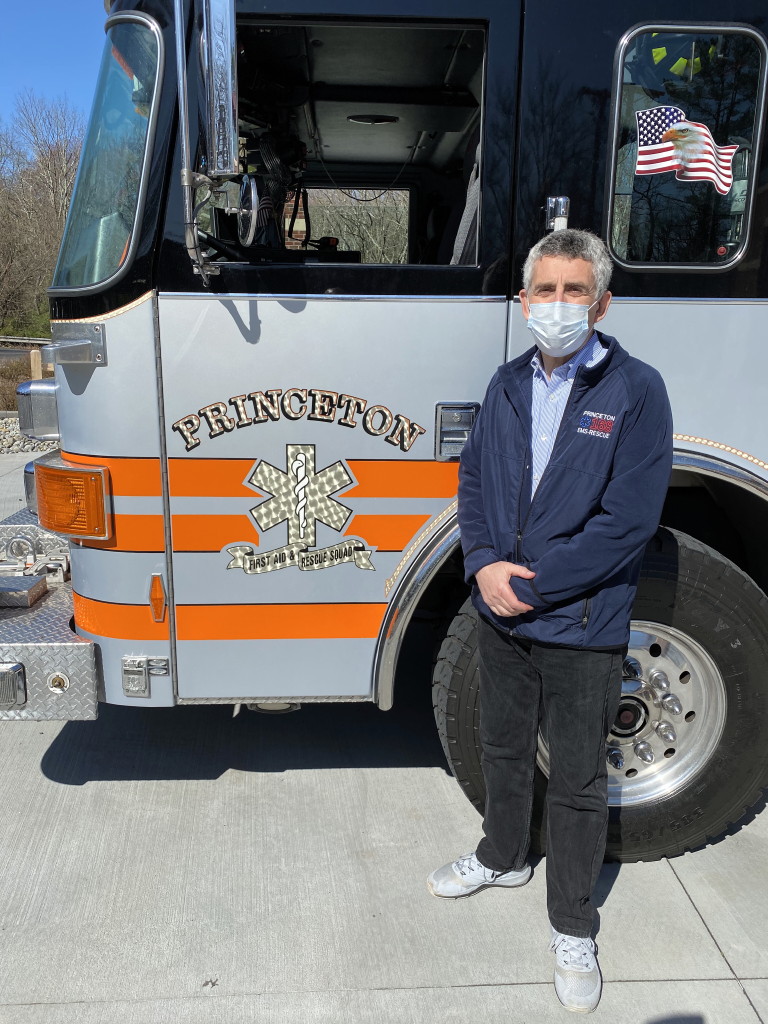By Pam Hersh
Giving up on things is not Mark Freda’s thing. I know these things about him, because I have worked with Mark on various town initiatives (emergency services, town/gown relations, Spirit of Princeton events) for the past 40 years. So when he, along with the Spirit of Princeton co-chair Kam Amirzafari, decided to cancel this year’s Memorial Day Parade, no one was giving up, according to Mark.
“We are just tabling the event for this year, but this gives us time to plan for an even bigger celebration next year. … We have to do this, to honor those who have sacrificed for all of us, and we need to celebrate our community. The community thrives on these events, we have too few celebrations that bring people from all walks of life together,” he said, reminiscing about community unity events in the past – July 4th Fireworks with the Princeton Symphony Orchestra, the Eagles/Giants preseason game at Palmer Stadium and the Princeton Firefighters Parade in June.
“That’s what the Spirit of Princeton hopes to accomplish, why we got started in the first place. We not only celebrate patriotic events (Flag Day, Veterans Day, Memorial Day), but also we are bringing people together – the need to do so feeling even more urgent during this COVID-19 public health emergency,” said Mark.
But since gathering people together is forbidden right now, and a virtual Memorial Day parade is virtually unappealing, Mark is focused on an activity that is valued and needed in real not virtual time: the lifesaving activity of the Princeton First Aid and Rescue Squad (PFARS). Even though his professional career has been that of a facilities manager for major corporations, his other equally demanding career has been giving back to and strengthening the community. The 63-year-old, who grew up on Erdman Avenue in Princeton, has been volunteering in various capacities since he was a teenager. His particular interests were in emergency services – as an EMT with the Princeton First Aid and Rescue Squad and firefighter with the Princeton Hook and Ladder Fire Company.
Finally, his two careers were brought together when Mark assumed the now paid position of president of the Princeton First Aid and Rescue Squad. Serving as chief of the squad is a 30-year squad veteran Frank Setnicky, and they make up the professional leadership team managing the squad’s nine paid professional Emergency Medical Technicians and its 80 to 90 volunteer EMTs.
So now Mark’s thing is the PFARS, which like Mark, has a mission of never giving up the community. COVID-19, although responsible for cancelling community events (this weekend was supposed to be Communiversity), has failed to overwhelm PFARS. “On one hand, we were lucky; on the other hand, we were prepared,” said Mark.
He credited EMT volunteer Bryan Hill, a Princeton High School alumnus and now getting his doctorate in nursing, for gathering and analyzing all the COVID-related information necessary to respond to the virus threat. Bryan, Mark said, made time in his very demanding schedule to stay on top of all the COVID data – continually gathering, organizing and analyzing statements coming from the governor, the New Jersey Department of Health, the Centers for Disease Control and Prevention, the World Health Organization, and various renowned health and science authorities.
“We were getting data and formulating strategies before COVID really hit Princeton. We had the protective gear, had the disinfecting materials, and developed protocols for social distancing, taking temperatures of our members, and handling calls from both patients with respiratory and flu-like ailments and those without. When cases began to emerge in Princeton, we were ready. Two of our members became ill with COVID-19, but we contained the spread, and they have recovered,” Mark said.
The luck was the timing of the move to the new building. The squad moved from its very cramped 5,000-square-foot building on N. Harrison to its new 15,000-square-foot headquarters on Mt. Lucas Road in December 2019.
“In the old building, we never could have practiced social distancing. We have crews in the building 24/7 – sleeping, eating. … There are typically three to six volunteer emergency medical technicians on an overnight shift, but the bunk rooms can accommodate as many as 12 volunteers. Also, in our new facility, all of our equipment now is inside. In the old building, we had to keep some of the equipment outside under awnings. Now, the four ambulances, a rescue truck, a rescue trailer, a boat and two utility vehicles all can fit inside the building. The indoor location for the equipment makes for a more effective response and maintenance,” Mark said.
Although PFARS is known for its high level of strategic preparedness, no one can be prepared emotionally for tragedy, Mark said. The line-of-duty death of EMT Michael Kenwood, who drowned during a Hurricane Irene rescue attempt, and the death of Advisory Board Member Bill Sword, who was struck by a falling tree in his own driveway during superstorm Sandy, are very much part of the squad psyche, but in an inspiring way. Bill, whose life had been saved by PFARS nine years earlier (after a horrific home invasion), was key in the planning of the new building. His widow, Martha Sword, is now chairman of the PFARS Board. Both men are memorialized within the new building. Their dedication to the squad and the Princeton community is something that “keep us going,” Mark said – something that COVID never could destroy.

